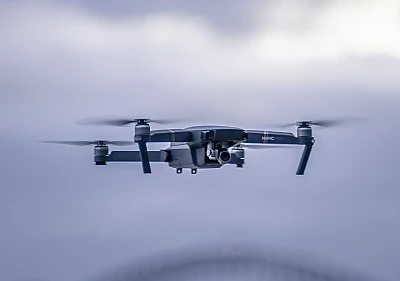“With the right framework in place, the drone services market in Europe could by 2030 reach a value of €14.5 billion, with a compound annual growth rate of 12.3%, and create 145,000 jobs in the EU”
A Drone Strategy 2.0 for a Smart and Sustainable Unmanned Aircraft Eco-System in Europe COM(2022)652 final, Brussels 29.11.2022.
This quotation illustrates the high expectations surrounding the growth of the unmanned aircraft systems (“UAS”, commonly known as “drones”) market in the coming years. Although drones are already used for different purposes, there is still a very wide range of other possible uses that are simply not yet possible, feasible, safe, or even legal.
According to the Drone Strategy 2.0, the drone services market includes three interlinked segments:
- Aerial Operations – such as surveillance, inspection, mapping, imaging, and telecommunications networking;
- Innovative Air Mobility (“IAM”) – covering international, regional and urban air mobility (“UAM”), to be initially carried out by electric vertical take-off and landing (“eVTOL”) aircraft and subsequently on similar platforms but remotely piloted before then becoming fully autonomous; and
- U-space – aimed at ensuring the safe operations of drones in the airspace.
In addition to the civil dimension, the drone eco-system includes an important military dimension, as the synergies (particularly technological synergies) between these two dimensions are deemed a critical success factor for EU competitiveness and defence capabilities. These different segments bring business opportunities in the growing drone market.
The Commission’s vision for 2030 is very ambitious and includes, among many others, “drones’ aerial operations” for “emergency services, inspections and surveillance using drones to gather data, as well as for the delivery of goods” and IAM services starting to provide “regular transport services of passengers, initially using aircraft with a pilot on board but with the ultimate aim to fully automate their operations”.
With a view to achieving this vision, the Drone Strategy 2.0 lists the priority areas (currently 10), which can be divided into 2 main objectives: (i) “to build the Union drone service market”, and (ii) “to strengthen the Union’s civil, security and defence industry capabilities and synergies”.
Below is a list of flagship actions (selected from the 10 areas mentioned above), divided by each objective:
1. To build the Union drone services market, the Commission intends to, among others:
- “adopt amendments to the Standardised European Rules of the Air and the Air Traffic Management/Air Navigation Services Regulation to safely integrate drone and piloted eVTOL operations”;
- “adopt new European standard scenarios for low to medium risk aerial operations”;
- “adopt rules for the ‘certified’ category of drone operations,addressing the initial and continued airworthiness of drones subject to certification; and the operational requirements applicable to manned VTOL-capable aircraft”;
- “adopt rules for the design and operations of vertiports under the scope of EASA Basic Regulation”;
- “develop balanced economic and financial requirements for the licensing of drone operators”; and
- “adopt training and competences requirements for remote pilots and pilots of VTOL aircraft”.
2. To strengthen the Union’s civil, security and defence industry capabilities and synergies, the Commission intends to, among others:
- “consider possible amendments to the existing financing/funding framework to ensure a consistent approach in support of dual-use research and innovation to improve synergies between civil and defence instruments”;
- “develop a Strategic Drone Technology Roadmap in order to identify priority areas to boost research and innovation, reduce existing strategic dependencies and avoid the emergence of new ones”;
- “encourage all relevant actors to further align certification requirements for civil and military applications towards those set by EASA, while considering military specificities and existing military certification standards”;
- “adopt new standard scenarios for civil operations that could facilitate corresponding military use cases”;
- “adopt a counter-drone package”;
- “adopt an amendment to the aviation security rules aiming to ensure that aviation authorities and airports increase their resilience when faced with the risks posed by drones”; and
- “define criteria for a voluntary ‘European Trusted Drone’ label”.
Currently, on a European Union level, the most important framework applicable to drones may be summarised as follows:
- Basic Regulation that subjects all UAS to EU rules
- Rules on the operation of UAS and their minimum technical requirements
- Rules on the air traffic management system for drones (U-space), comprised of a package of 3 Regulations (Commission Implementing Regulation (EU) 2021/664 of 22 April 2021, Commission Implementing Regulation (EU) 2021/665 of 22 April 2021 and Commission Implementing Regulation (EU) 2021/666 of 22 April 2021).
Considering the current framework along with the selected flagship actions, it seems clear that a number of rules related to UAS will change until 2030.
VdA closely monitors developments in this sector and its experienced aviation, space, and defence cluster team can help your company reach its fullest potential by taking advantage of the Drone Strategy 2.0.
#Tech_Hub_VdA | Tech Hub by VdA - A Global Digital Impact
